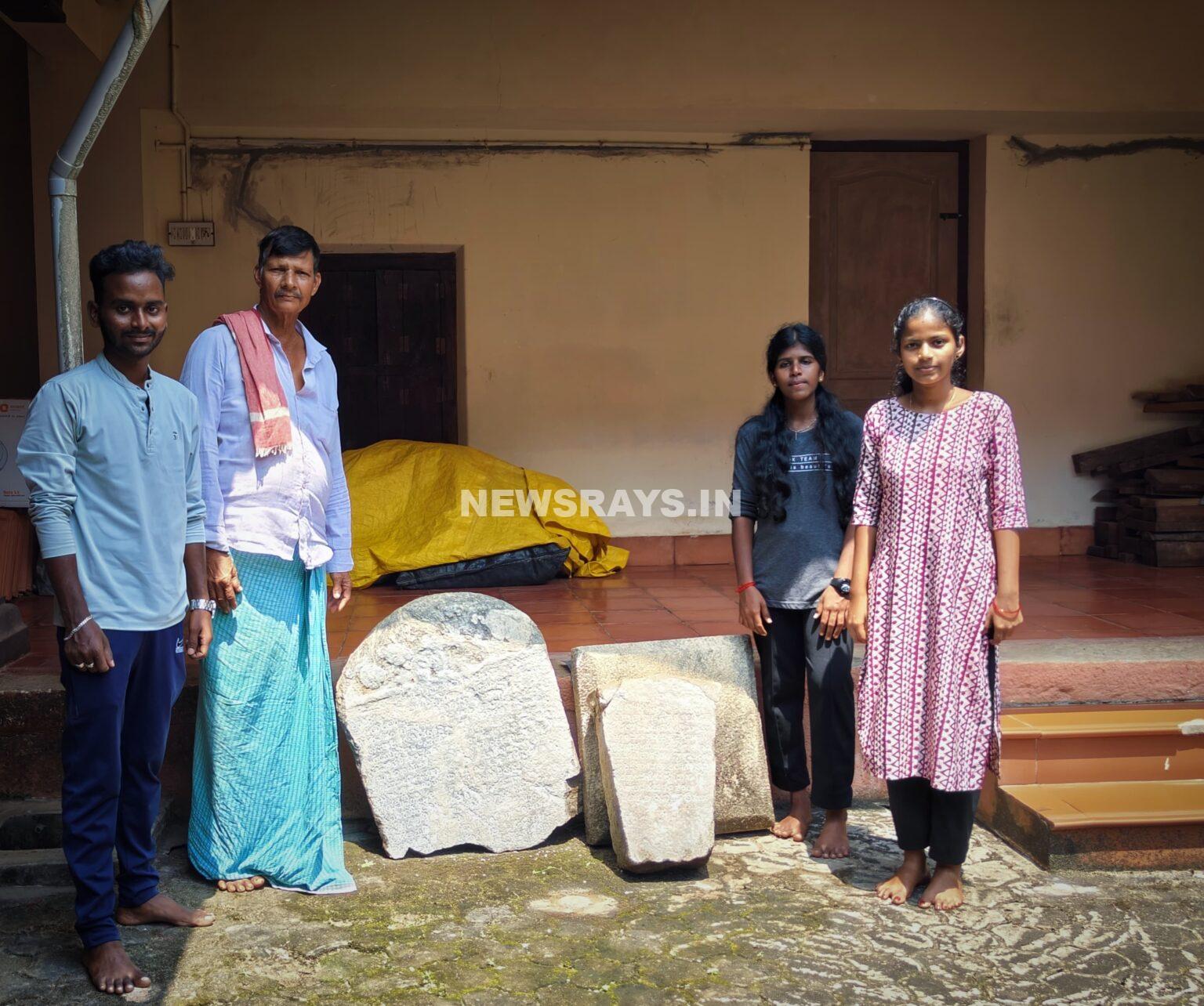In a significant archaeological discovery, two ancient inscriptions from the Vijayanagara-Tuluva dynasty period were recently studied at the Bhandarakeri Matha in Barakuru. The research was conducted under the permission of Sri Sri Sri Vidyeshatheertha Swamiji of Bhandarakeri Matha, led by Dr. G.V. Kallapura, Director of Srinikethana Museum and Keladi Chennamma Research Center-Kukke Subramanya, along with Deputy Director Shruthesh Acharya Mudubelle.

The Historical Significance
These previously undocumented inscriptions, carved in Kannada script and language on granite stone, though partially damaged, provide crucial insights into the administrative and religious history of the Tulu region during the Vijayanagara period.
The Vijeyappa Odeya Jain Inscription
The first inscription dates back to the reign of Krishna Deva Raya (1509-29 CE) and specifically mentions Vijeyappa Odeya, who served as the governor of Barakuru during 1519-20 CE. This 11-line inscription documents a donation made during a lunar eclipse. It notably mentions Sri Raghuvara Theertha Swamiji and Sri Gopinatha Devaru, with signatures from the Janis of Hosavala (present-day Hosala) and Vijeyappa Odeya as witnesses. The inscription concludes with a blessing and the Jain invocation "Sri Vitaraga."
The Achyuta Raya Inscription
The second inscription, dating to 1539 CE during the reign of Achyuta Raya (1529-42 CE), begins with an invocation to Ganesha and contains 18 surviving lines. It records that Kondamarasa Odeya administered Barakuru under the orders of Achyuta Raya, through the directive of Sankana Nayaka. The inscription details a land grant made to Sri Gopinatha temple for daily offerings and perpetual lamp maintenance, under the supervision of Sri Raghuvara Theertha, disciple of Hiranyanatha Theertha of Mudamatha in Bhandarakeri. The grant included 40 Varaha Gadyana coins for regular temple offerings.
New Historical Perspectives
This discovery has led to significant historical revisions, particularly regarding Kondamarasa Odeya's reign. Previously thought to have ruled from 1533-36 CE, the new inscription confirms his administration extended until at least 1539 CE. The inscriptions also help establish the timeline of Sri Raghuvara Theertha's period and mention important regional areas like Nilavara and Thekatte.
Research Support
The field research was supported by the Oriental Research Center-Udupi, under the guidance of Prof. S.A. Krishnayya, with assistance from temple staff member Kushala Devadiga and archaeology researchers Manjunath Nandalike, Shravya R, and Yashasvini Acharya.
These newly studied inscriptions add a valuable dimension to understanding the historical landscape of Tulu Nadu during the Vijayanagara period, particularly illuminating the administrative structures and religious practices of the time.
The discovery stands as a testament to the rich cultural heritage of the region and the continued importance of epigraphical studies in uncovering India's historical narrative.
